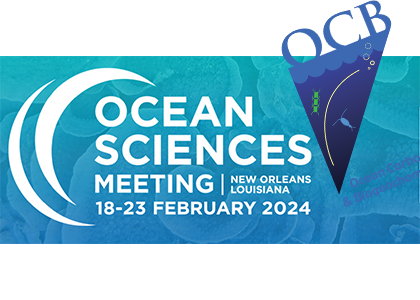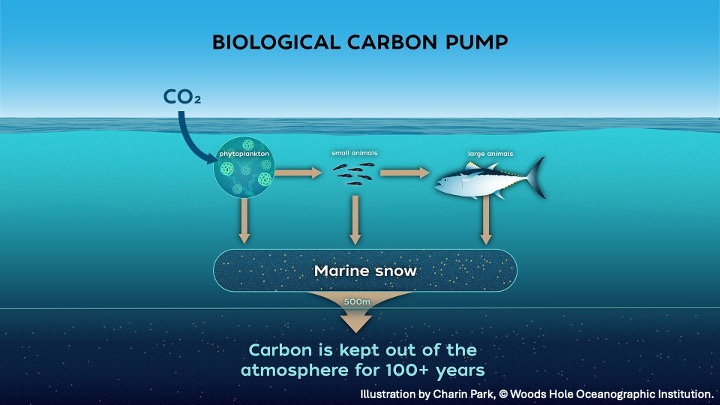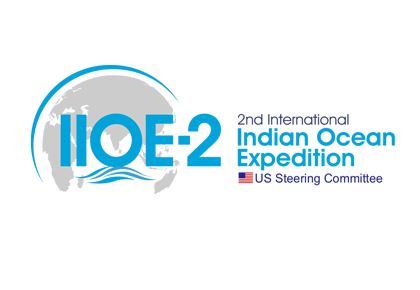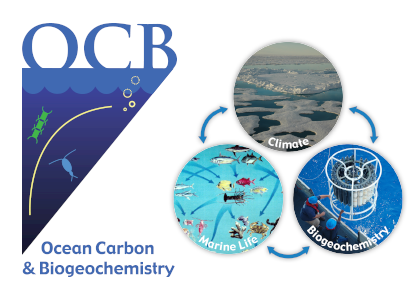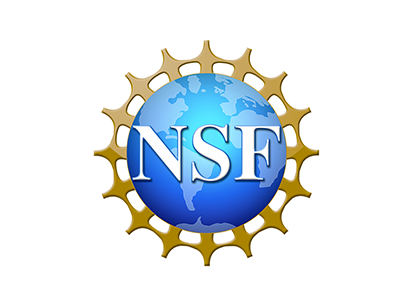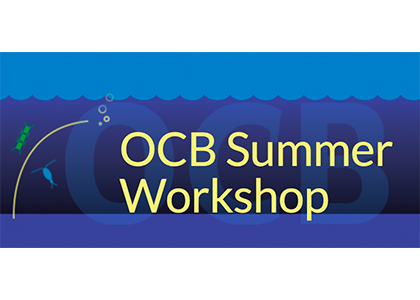Visit the OCB at booth 45 (exhibit hall map)
See list of OCB-relevant science sessions
Events & Workshops (full list) – includes lots of early career support!
- Demystifying the Tenure Track Pathway (Sunday)
- Ocean Science Education and Outreach: Broadening the Reach of Your Science (Sunday)
- #ResearchLifeHack: Building the Ocean Data FAIR Essentials (Discovery, Interoperability, Excellent Documentation, Open Licensing) (Sunday)
SOLAS, OASIS, and CLIVAR Workshop FAIRSEAS: The Future of Internationally Coordinated Air-Sea Interactions Research – Feb. 21, 2026 (Edinburgh, Scotland – hybrid format) DETAILS
Agency Forums
- NSF Ocean Sciences Forum (Tues. @ 16:00)
- NASA Ocean Programs Town Hall (Wed. @ 16:00)
Town Hall Meetings
- TH13E – Monitoring the Vertical Distribution of the Upper Ocean Layer Using Spaceborne and an Autonomous Network of Sea-Based Oceanic Profiling Lidar (Monday)
- TH13F – Ocean Science in a Time of Political Uncertainty (Monday)
- TH13H – Surface Ocean–Lower Atmosphere Study (SOLAS) 3.0: From Science to Solutions (Monday)
- TH13I – The Society for Women in Marine Science (Monday)
- TH13J – The Surface Ocean CO2 Reference Observing Network (SOCONET): An Emerging Network Within the Global Ocean Observing System Focused on Providing Data to Support Estimates of Ocean Carbon Uptake—Current Status and Future Prospects (Monday)
- TH23A – Advancing Benthic Modeling: Introducing SedBGC_MIP, a Community-Driven Model Intercomparison Initiative (Tuesday)
- TH23C – Challenges and Opportunities for Ocean Sciences in the IPCC 7th Assessment Report (Tuesday)
- TH23F – mCDR at the Crossroads: Combining Science, Markets, and Collaboration to Map a Future for mCDR (Tuesday)
- TH33A – An Environmental Impact Assessment Framework for Marine Carbon Dioxide Removal (Wednesday)
- TH33B – BioGeoSCAPES: Querying the Ocean’s Microbial Life Support System (Wednesday)
- TH33C – Bio-GO-SHIP: Establishing an International Program to Deliver Sustained Open-Ocean Biological Data (Wednesday)
- TH33E – Cross-Mission Synergy for Coastal and Inland Aquatic Remote Sensing from Space (Wednesday)
- TH33F – Deep-Ocean Science as the Foundation for a Thriving Global Ocean (Wednesday)
- TH43B – Creating Truly Global Datasets of Benthic Fluxes for Advancing Carbon and Nutrient Cycling Research (Thursday)
- TH43G – Leveraging Oceanographic Data Repositories as Educational Partners (Thursday)
- TH43J – Update on OneArgo and GO-SHIP: Sustained Ocean Observations for Heat, Freshwater, Biogeochemistry, and Tracers (Thursday)
- TH43K – Shaping the Future of Ocean Practices: A Community Conversation on the OBPS Strategic Plan 2026–2030 (Thursday)
- TH53B – Establishing the Scientific Framework and Priorities for OceanObs’29 (Friday)
- TH53H – The 2025–2035 Decadal Survey of Ocean Sciences for the National Science Foundation (Friday)
Ocean Outcomes Sessions

